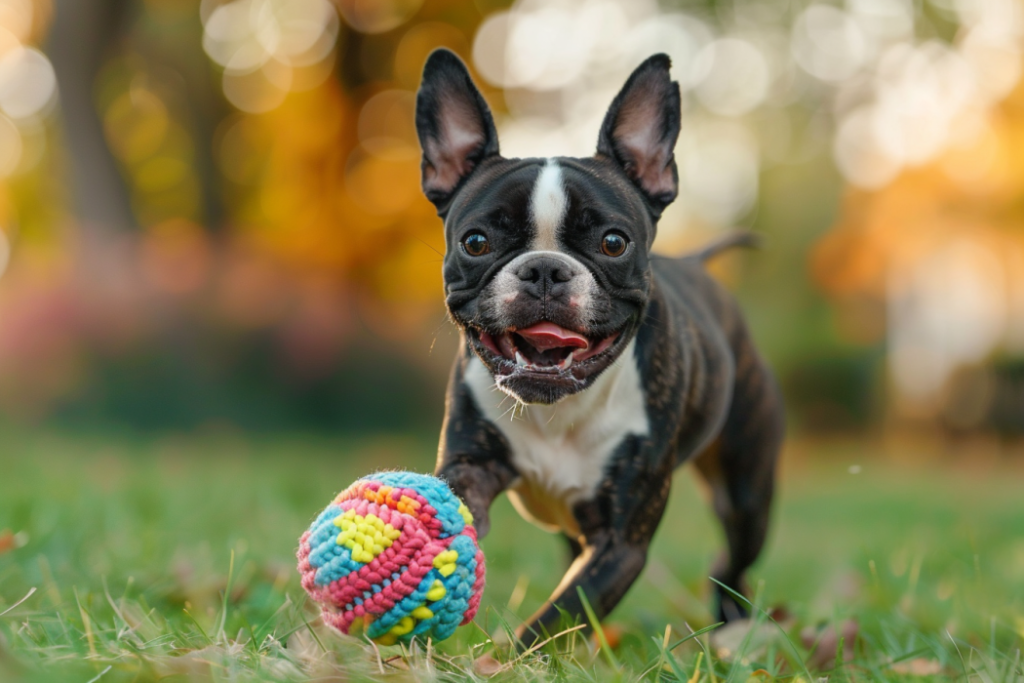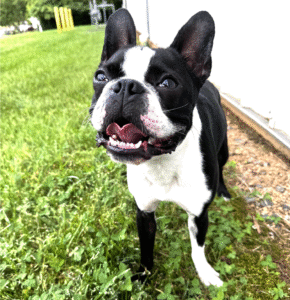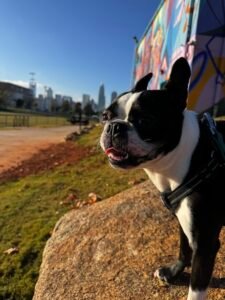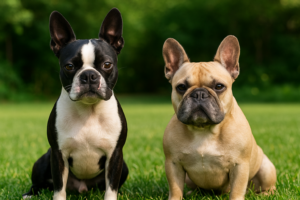Boston Terriers hold a unique place in the landscape of American dog breeds, symbolizing a rich history that began in the heart of Boston, Massachusetts. This breed’s origin story is a blend of purposeful breeding and cultural transformation, which led to the family-friendly companion known today.
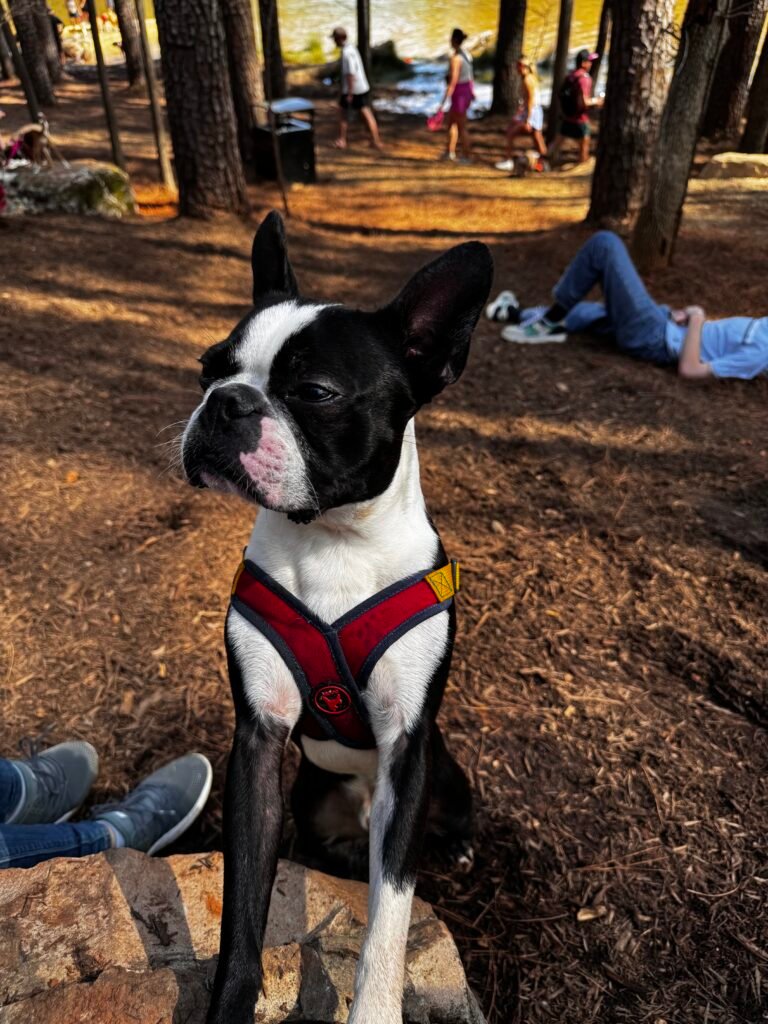
The Roots of the Breed
The journey of Boston Terriers started with a single dog named Judge in the 1870s. This particular canine was a crossbreed between an English Bulldog and a now-extinct White English Terrier, brought into being by Robert C. Hooper, a Boston resident. Judge, a robust and muscular dog, weighed around 32 pounds, displaying a compact build that hinted at his bulldog heritage.
Physical attributes of Judge:
- Muscular and compact
- Strong, pronounced jawline
- Short coat typical of bulldog mixes
Selective Breeding and Recognition
The path from Judge to the modern Boston Terrier involved meticulous selective breeding aimed at refining certain physical traits and enhancing the dog’s sociable nature. By the early 20th century, the breed had decreased in size and the aggressive traits had been bred out, transforming into a friendlier, more manageable companion. In 1893, this culminated in recognition by the American Kennel Club (AKC), marking Boston Terriers as one of the first breeds developed in America to be officially acknowledged.
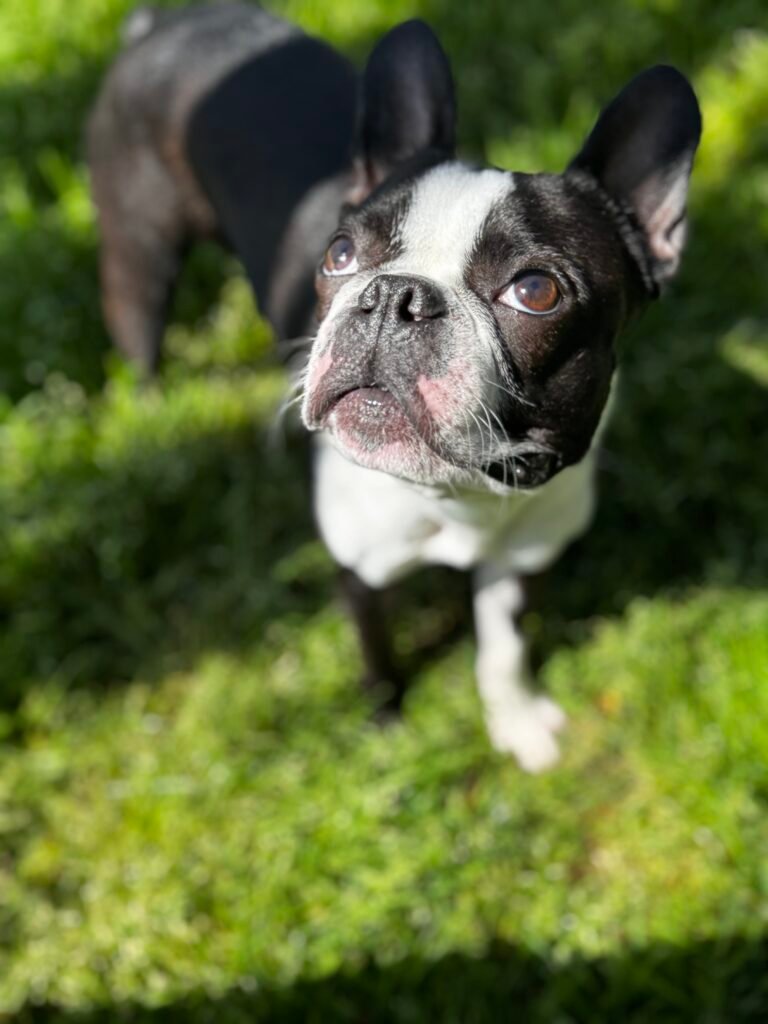
Defining Characteristics and Personality
Boston Terriers are distinguished by their smooth coat and square head, often sporting a striking color contrast that resembles a tuxedo — a feature that enhances their charm and appeal at first glance. However, it’s their personality that truly endears them to their owners.
Personality traits:
- Friendly: Known for their amiable nature, they are excellent at making human connections.
- Intelligent: Quick to learn and easy to train, making them suitable for dog sports and family activities.
- Adaptable: They can thrive in different environments, from city apartments to rural homes.

Health Considerations
Despite their many positive attributes, Boston Terriers are predisposed to certain health challenges, mainly due to their distinct physical structure. They often face issues like brachycephalic syndrome, which affects their breathing and are prone to eye injuries because of their prominent eyes.
Boston Terriers Today
From their inception as a crossbreed in the bustling streets of Boston to their status today as cherished household pets, Boston Terriers have undergone a remarkable evolution. They not only reflect a chapter of American cultural history but also embody the success of thoughtful, directed breeding practices.
Reasons to adopt a Boston Terrier:
- Companionship: Their lovable nature makes them ideal for companionship.
- Ease of care: They require minimal grooming and adapt easily to various living situations.
- Cultural icon: Adopting a Boston Terrier means embracing a piece of living history.
Owning a Boston Terrier means more than having a pet; it’s about continuing a legacy of companionship and cultural heritage. Their adaptability and engaging personality make them perfect for any dog lover looking for a breed with both a storied past and a bright future.
FAQ
What two breeds make a Boston Terrier?
Boston Terriers originate from a cross between the English Bulldog and the now-extinct White English Terrier.
How did they make the Boston Terriers?
Boston Terriers were initially bred in the late 19th century in Boston, Massachusetts. The breeding process involved selective mating between the English Bulldog and the White English Terrier to develop a new breed that combined desirable traits from both.
What did they mix to get a Boston Terrier?
To create the Boston Terrier, breeders mixed the English Bulldog with the White English Terrier. This combination was aimed at achieving a smaller, more manageable dog with a friendly temperament.
Do Boston Terriers breed naturally?
Yes, Boston Terriers can breed naturally. However, due to their compact build and the shape of their heads, some may require assistance through artificial insemination or veterinary intervention during delivery (such as a cesarean section) to ensure the health of the mother and puppies.
How were blue Boston Terriers bred?
Blue Boston Terriers, also known as gray or lilac, are not a standard color recognized by the American Kennel Club (AKC). The blue coat color results from a dilution of the traditional black coat gene. This color variation was bred through selective breeding practices that focused on this rare and recessive gene trait, pairing carriers of the dilute gene to produce puppies with the distinctive blue coat.


